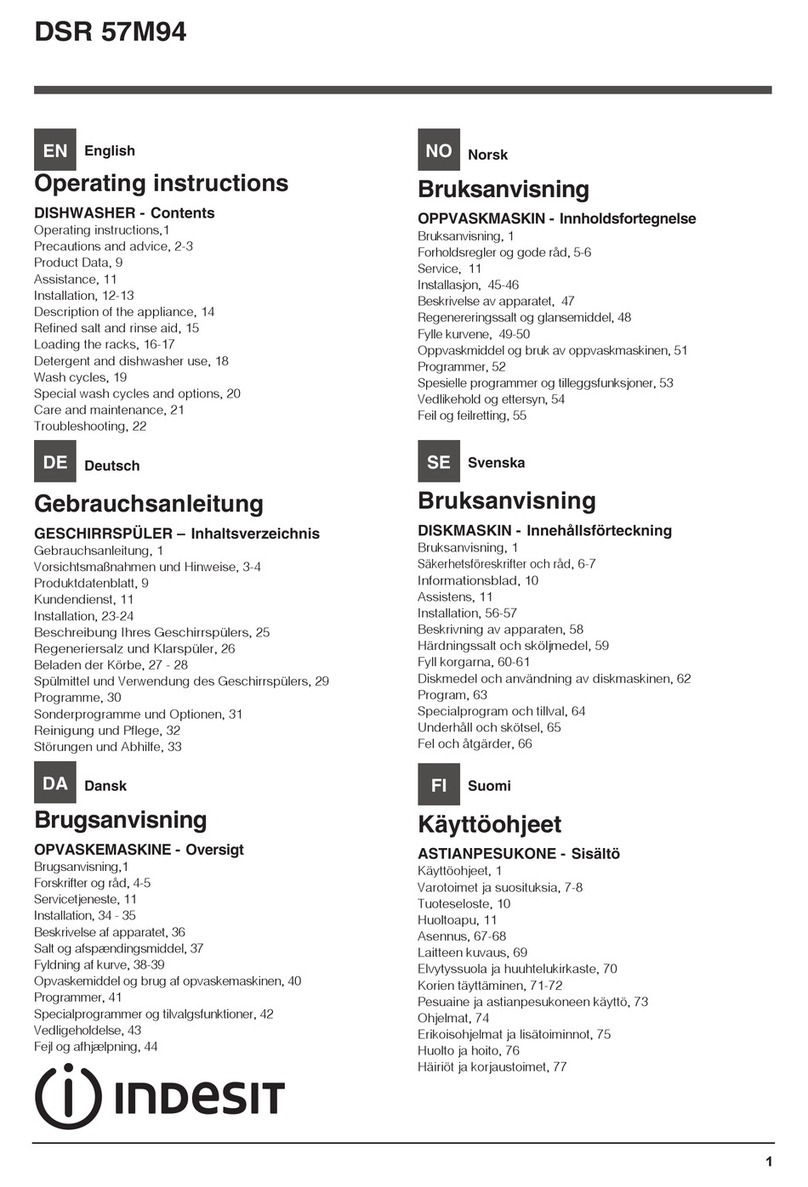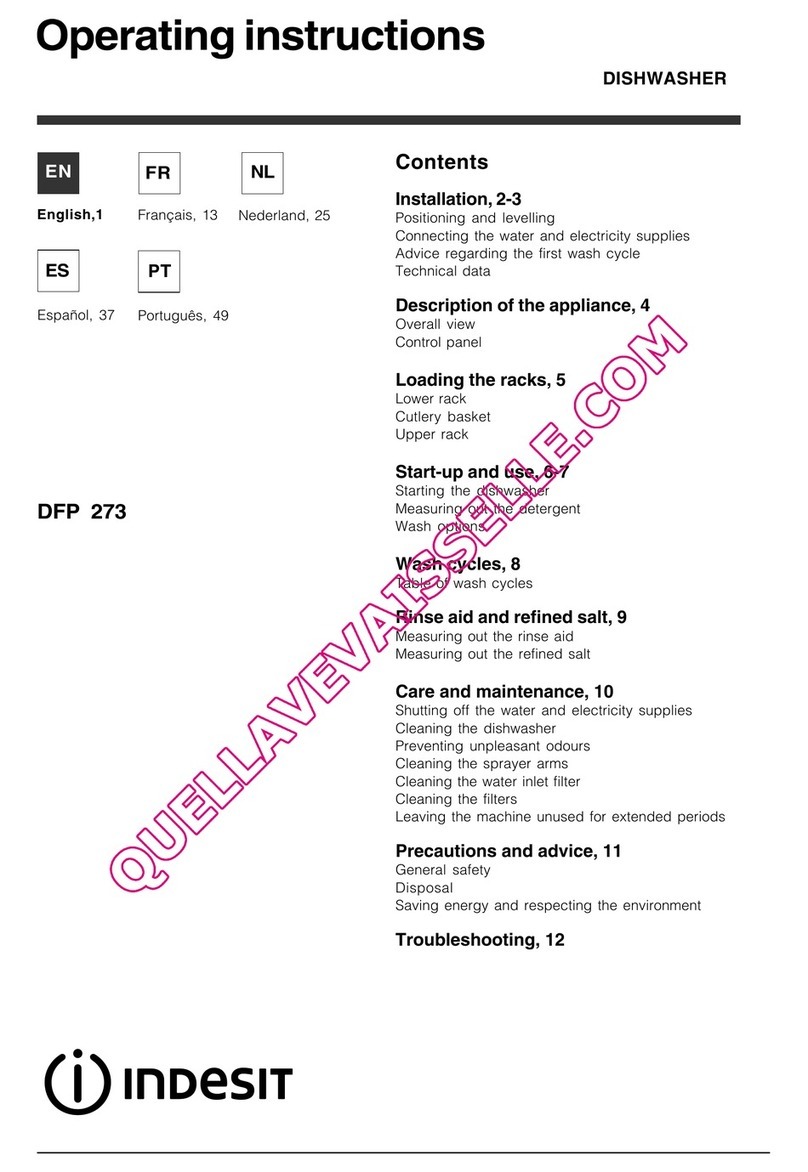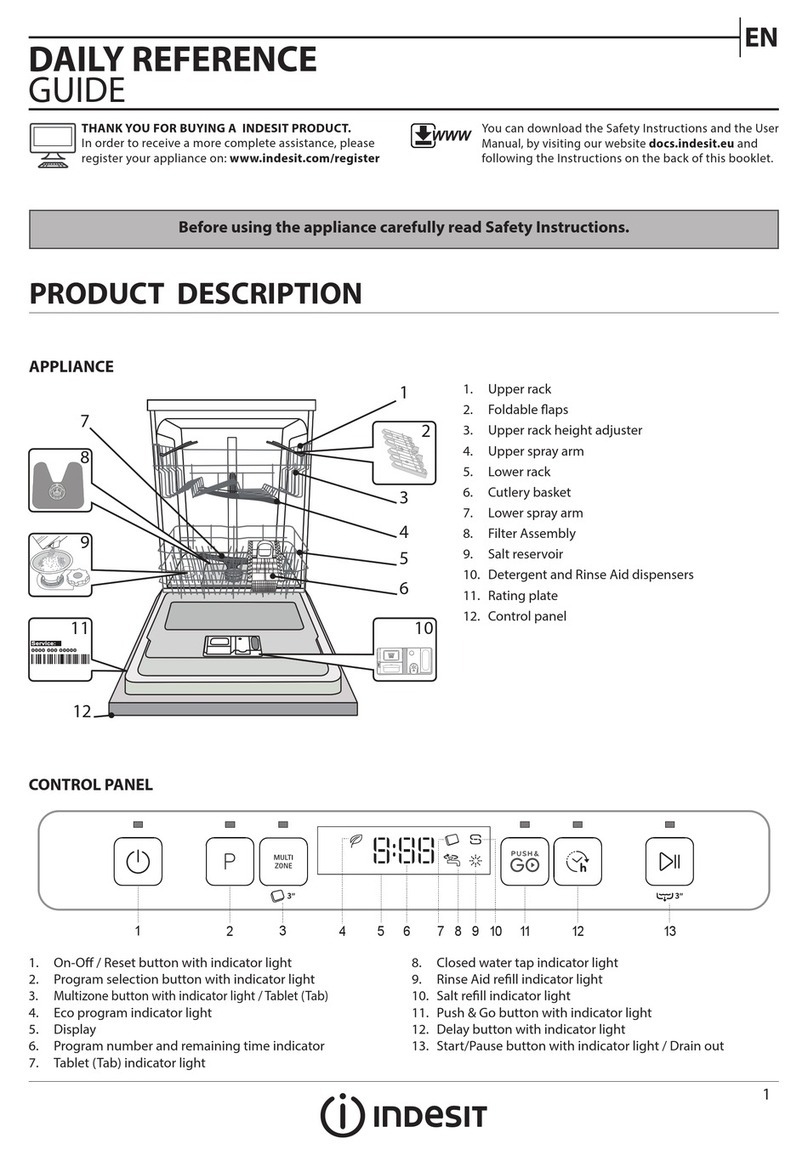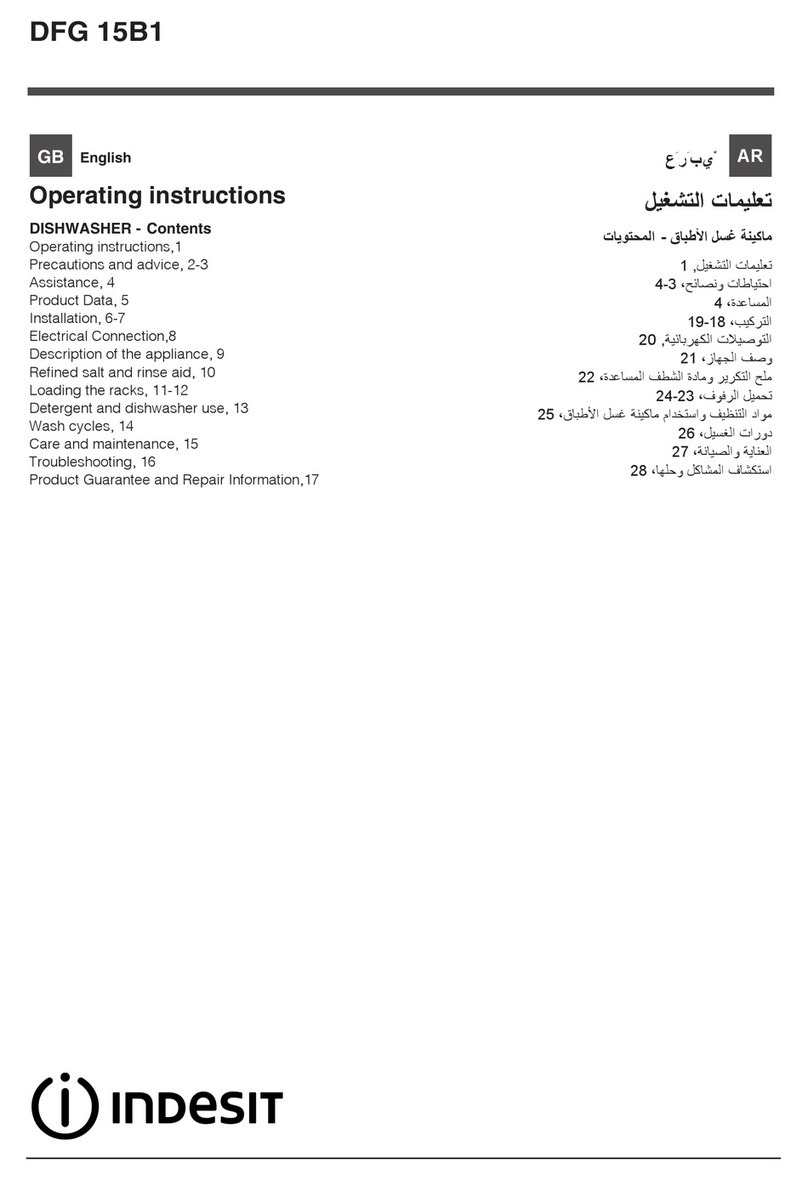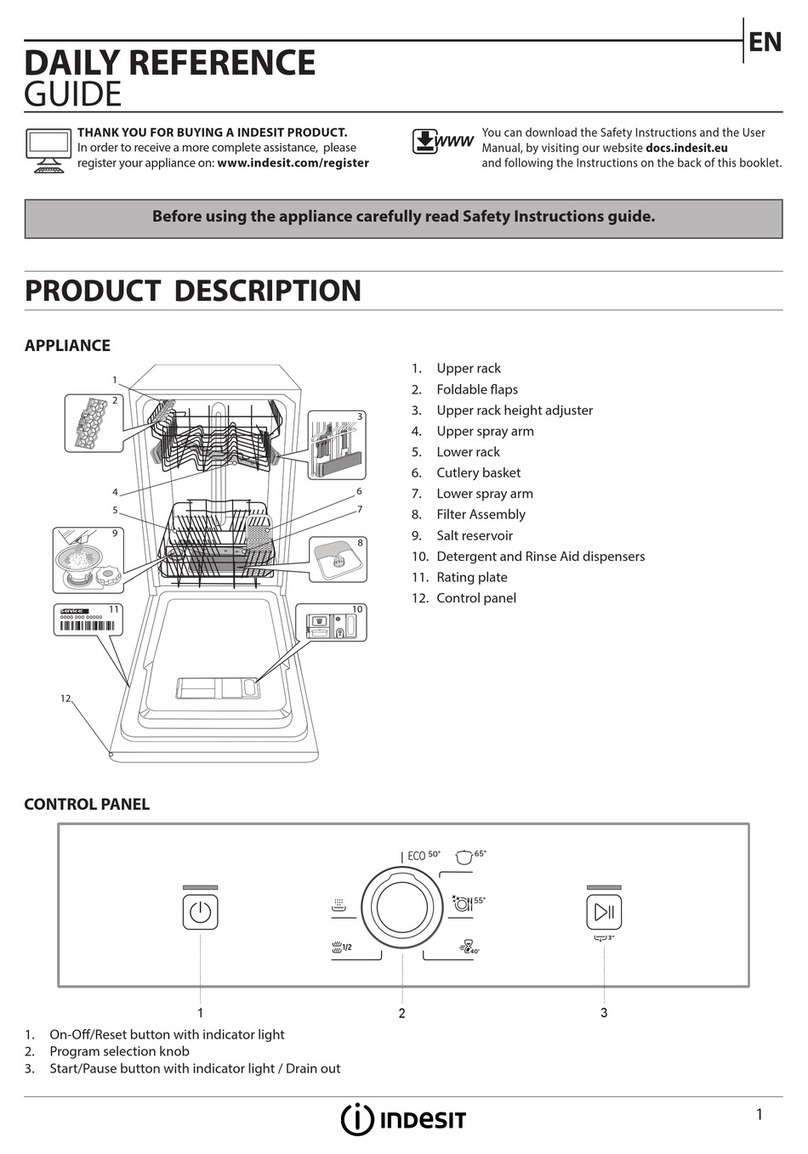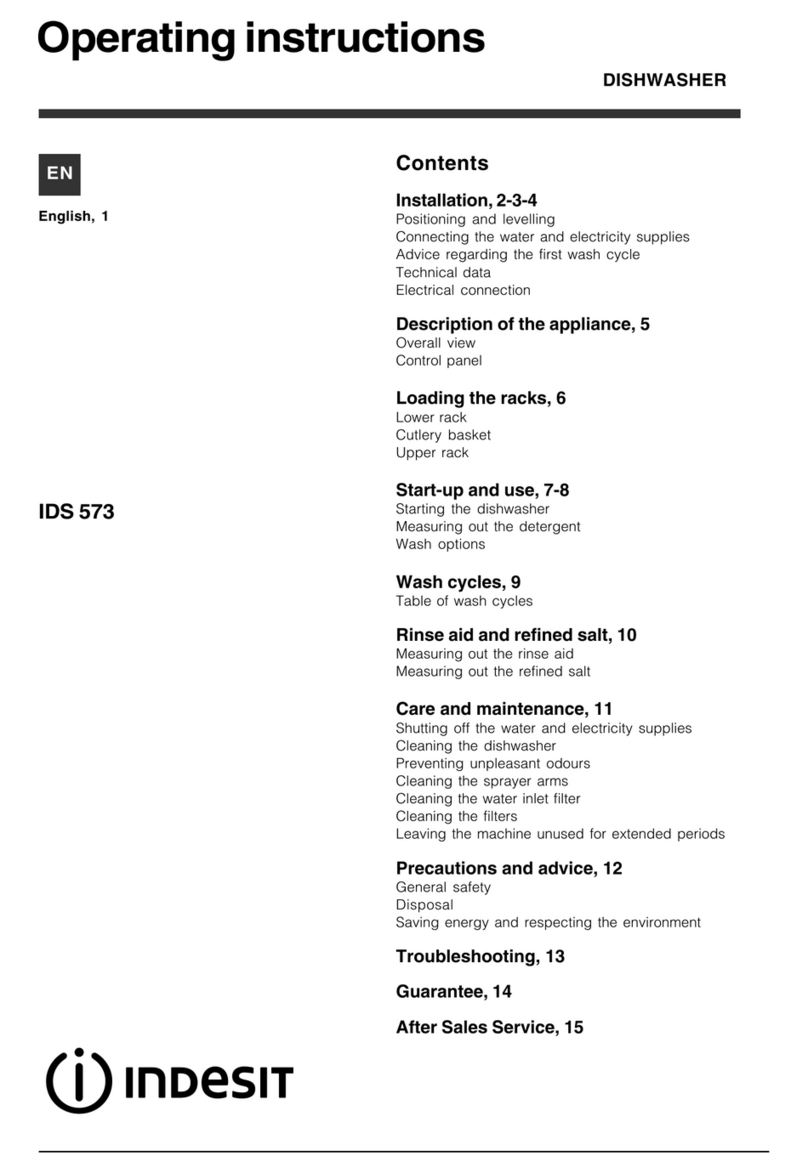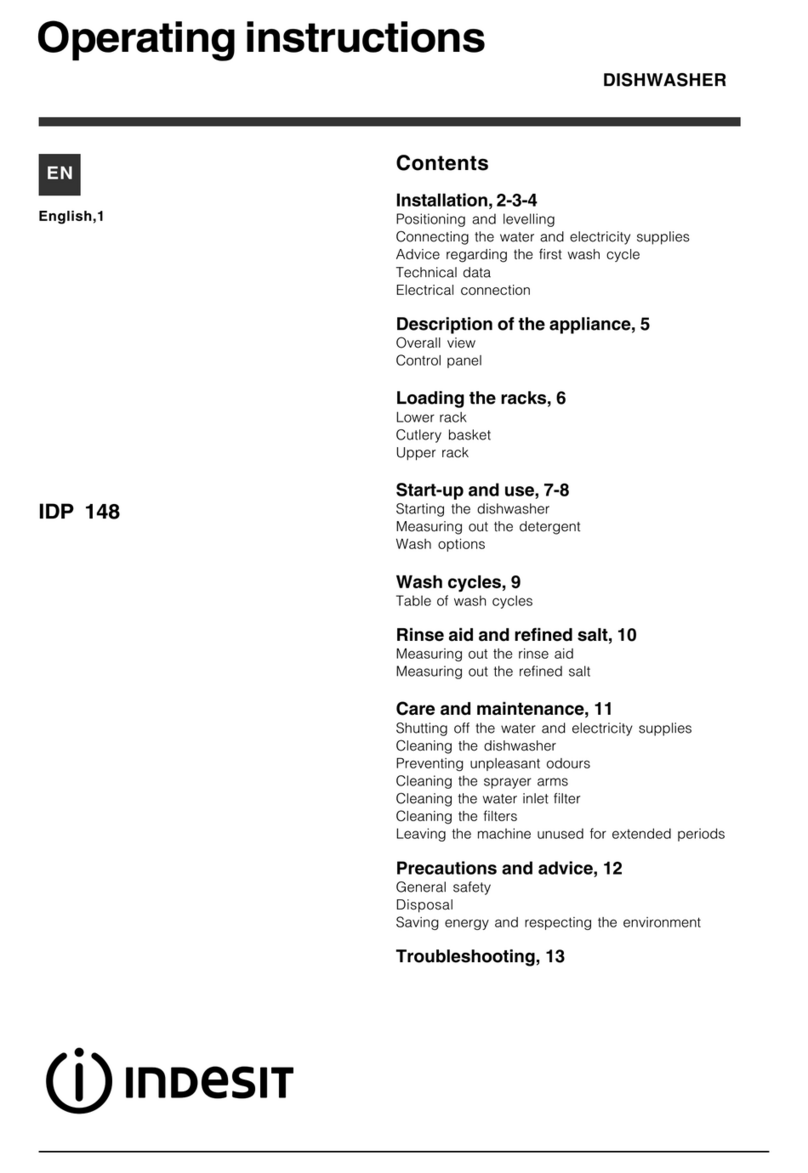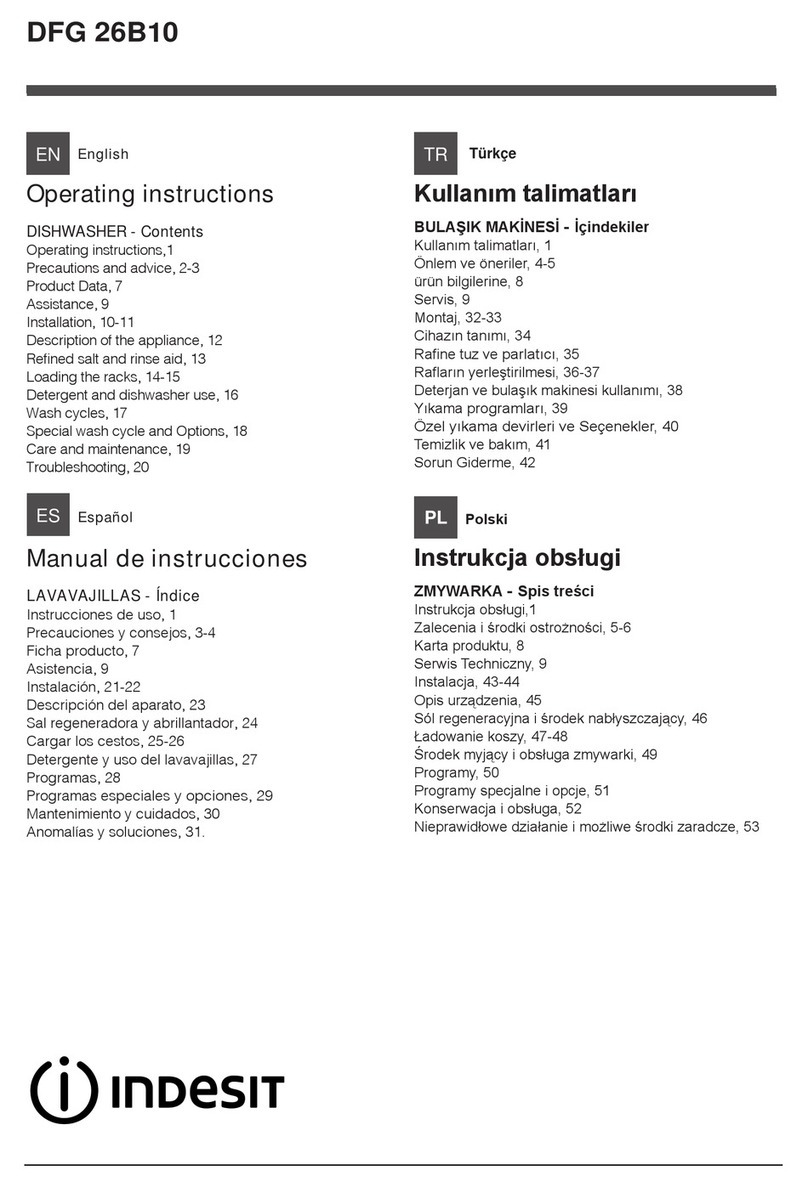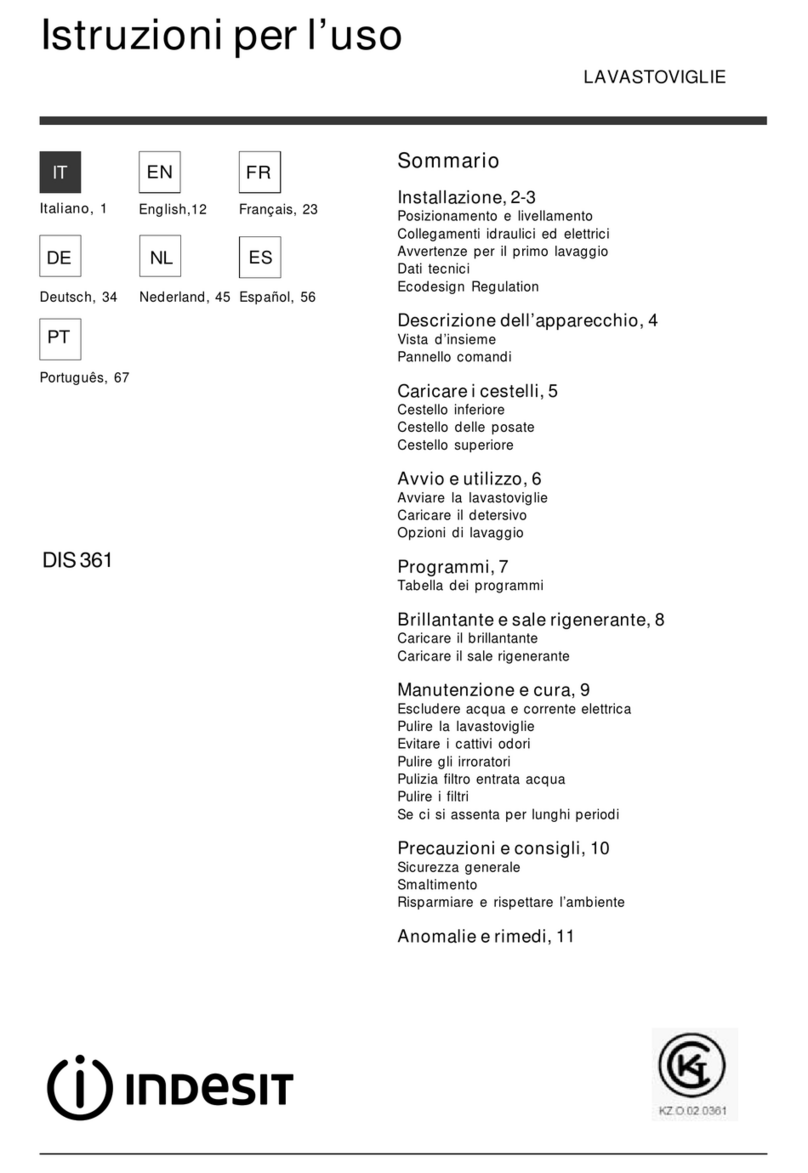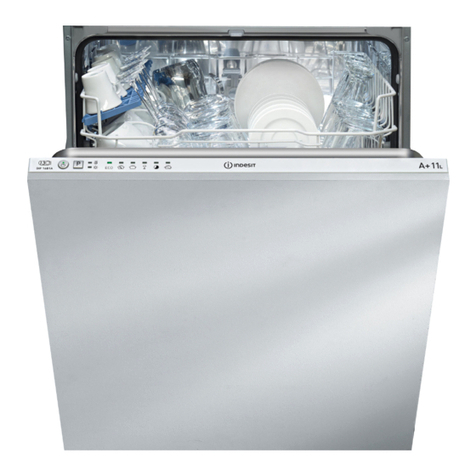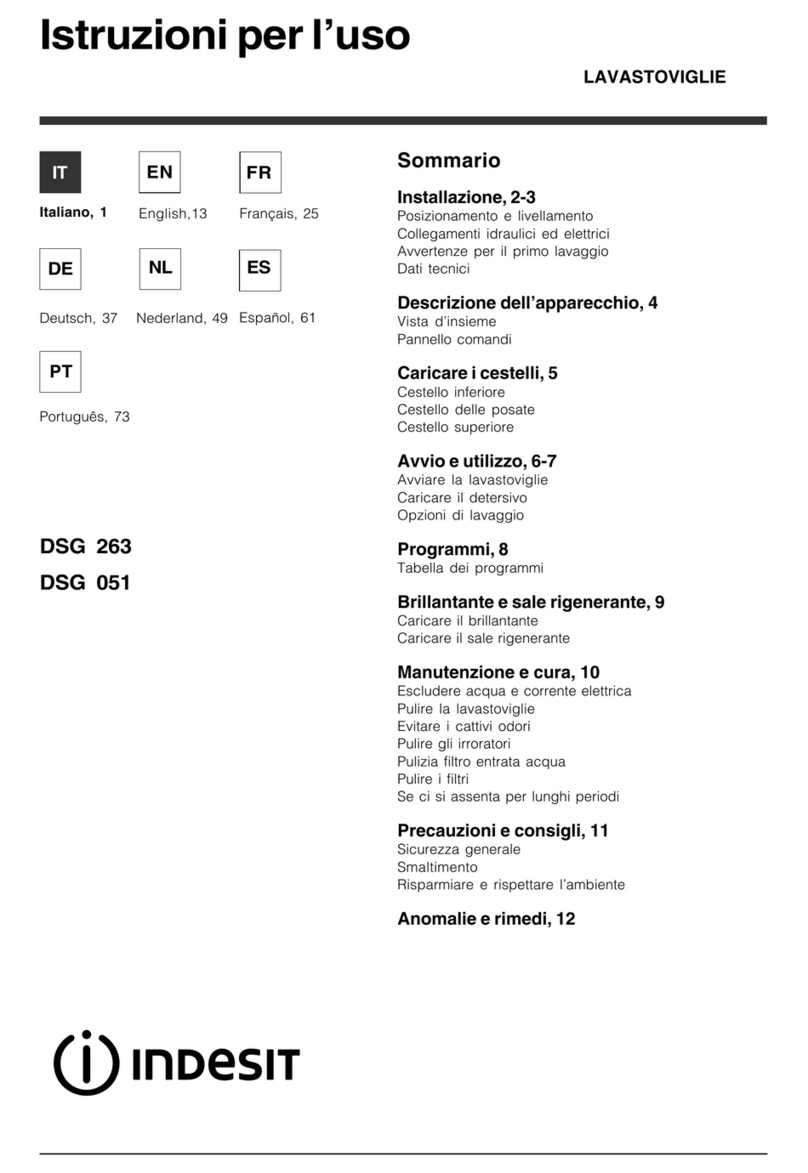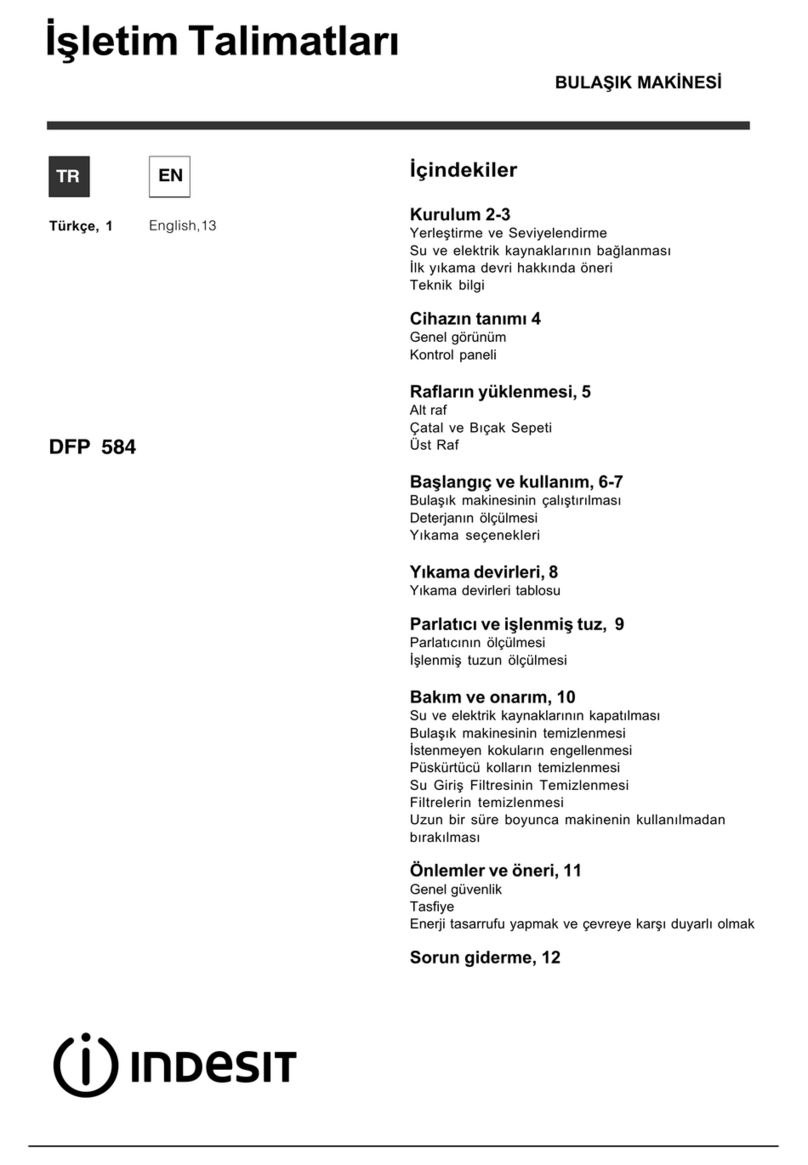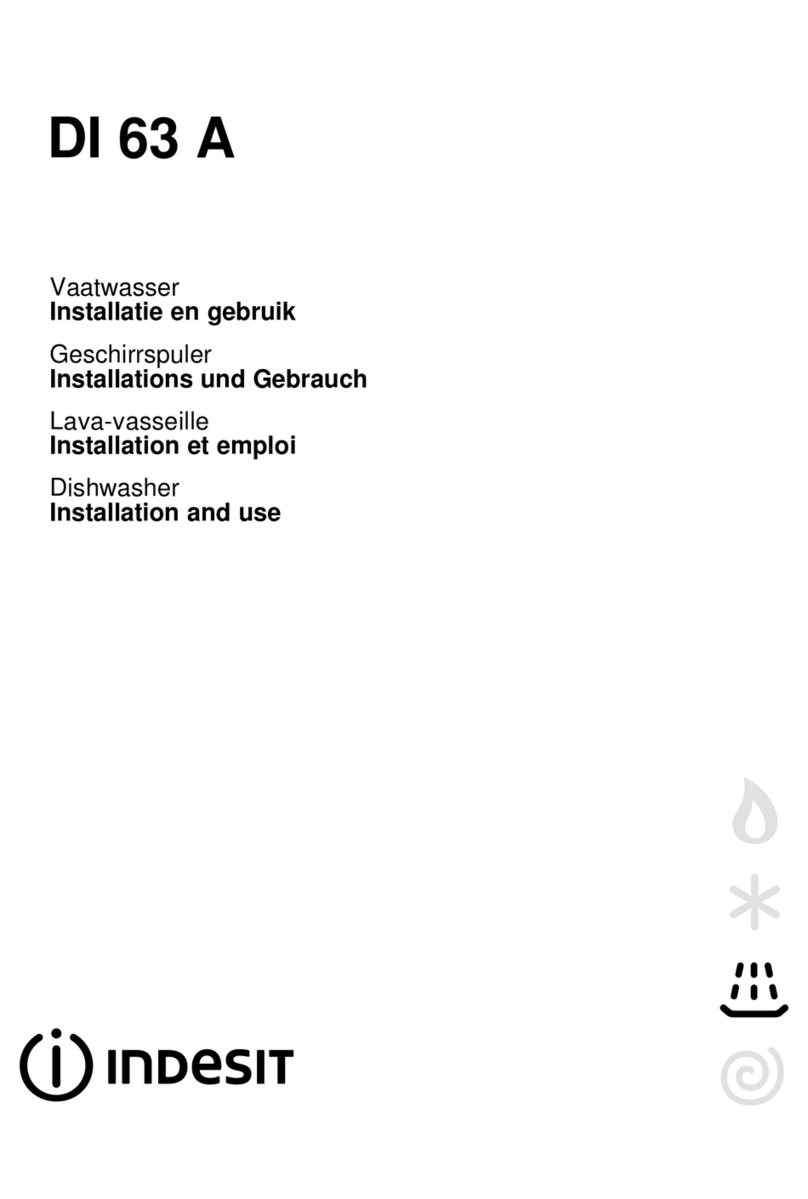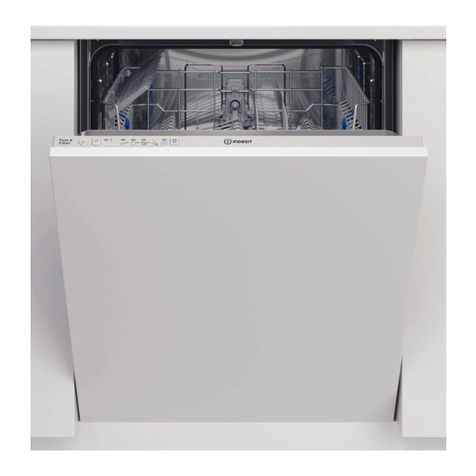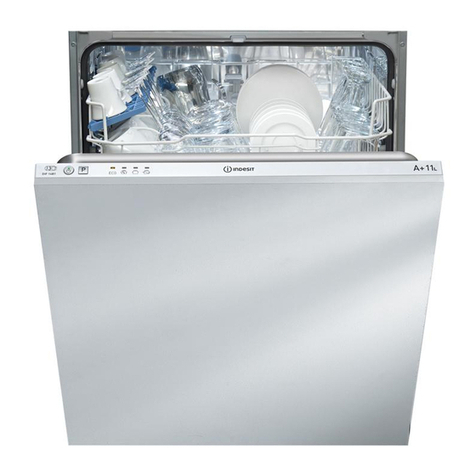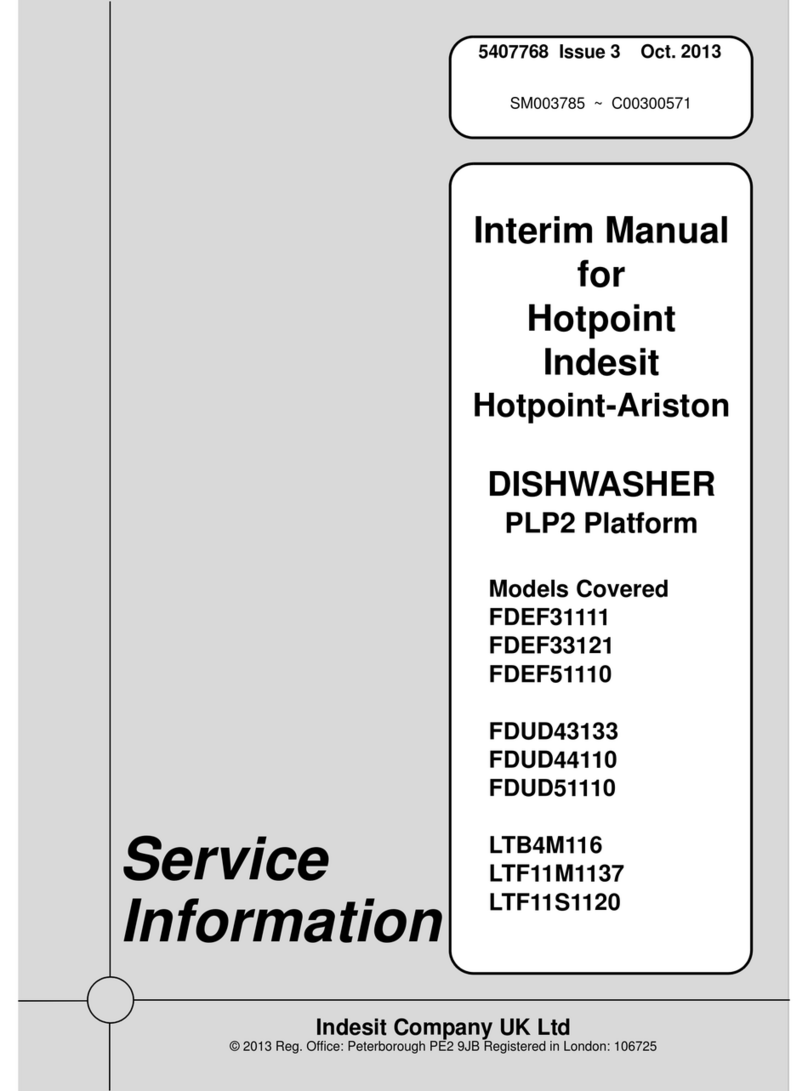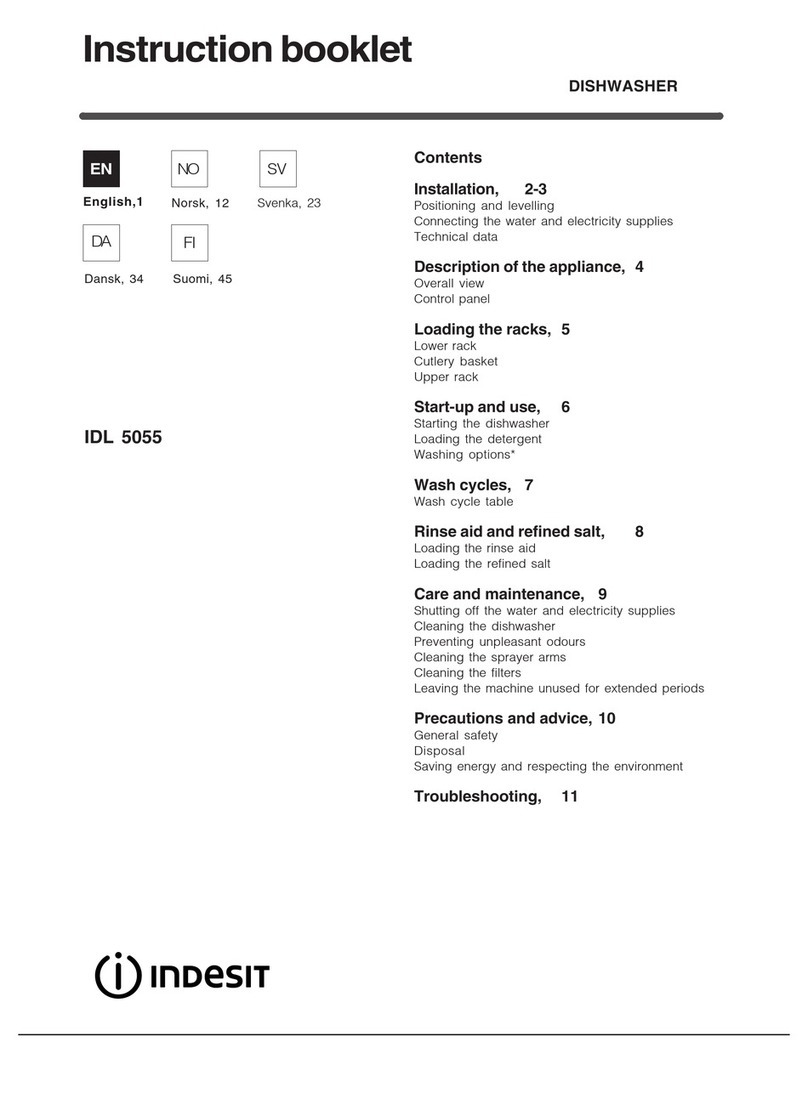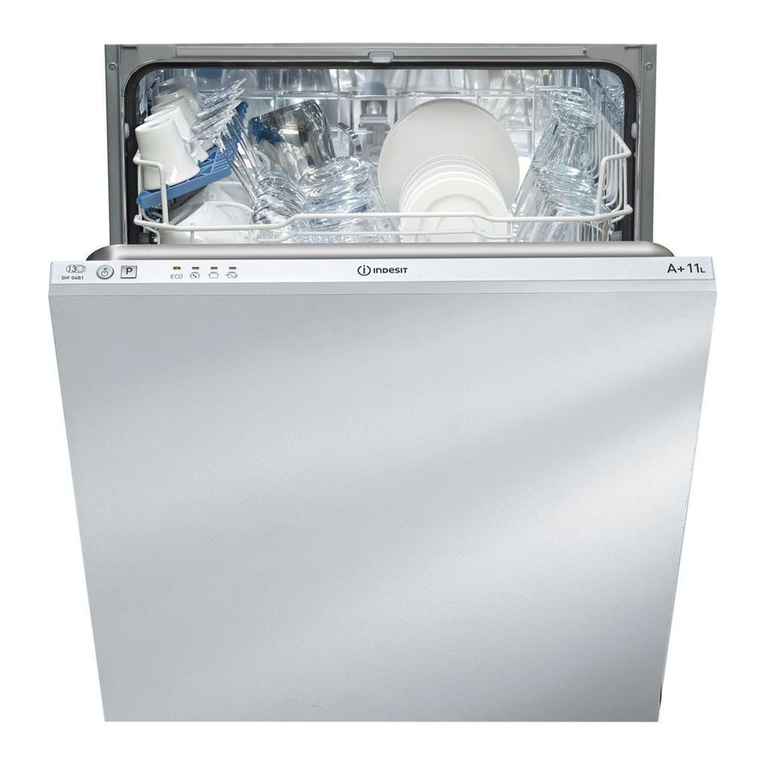EN
9
Rinseaid andrefined salt
Only use products which have been specifically
designed for dishwashers.
Do not use table salt or industrial salt, or washing
up liquid.
Follow the instructions given on the packaging.
If using a multi-functional product it is not necessary to add
rinseaid;however,we recommend thatyouadd salt, especially
if you live in an area where the water is hard or very hard.
Followthe instructions givenon the packaging.
If you do not add salt or rinse aid, the LOW
SALT*and LOW RINSE AID*indicator lights remain
lit.
Measuring out the rinse aid
Rinse aid makes it easier for the crockery to dry, as water
runs off surfaces more readily and therefore does not leave
streaks or marks.
The rinse aid dispenser should be filled:
•When the LOW RINSE AID*indicator light onthe control
panelis illuminated; 1. Open the dispenser by turning
the lid (G) in an anticlockwise
direction.
2.Pourin therinse aid, makingsure
it does not overflow from the
dispenser. If this happens, clean
the spill immediately with a dry
cloth.
3. Screw the lid back on.
NEVER pour the rinse aid directly into the appliance tub.
Adjusting the amount of rinse aid
If you are not completely satisfied with the drying results, you
may adjust the quantity of rinse aid used. Use a screwdriver
to turn the dosage adjuster (F) to one of the 6 pre-set positions
(the default position is set to 4):
• If there are streaks on the crockery, set the adjustment
device to a lower number (1-3).
• If drops of water remain on the crockery or if there are
limescale marks present after the cycle has finished, set the
adjuster to a higher number (4-6).
Setting the water hardness
Every dishwasher is equipped with a water softener which, by
usingrefined salt designedespecially forthis type ofappliance,
supplieswater without limescale which is then usedto wash the
crockery.
Thisdishwasher offers a setting which helps toreduce pollution
andoptimiseswashingperformance inaccordancewiththe water
hardness level in your area. This information can be obtained
fromthe organisationwhich supplies yourhousehold withwater.
- Switch the machine off using the ON/OFF button and open
the door.
- Set the SELECT WASH CYCLE knob first to wash cycle 5,
then to wash cycle 1, then to wash cycle 5again.
- Press the ON/OFF button; the wash cycle phase (washing,
drying, end) indicator lights will flash. It is now possible to
select the water hardness level. There is a water hardness
level for every wash cycle:
E.g.: wash cycle 1, water hardness level 1
wash cycle 2, water hardness level 2, etc. etc., up to a maxi-
mum of 5*levels.
(The default water softener setting is level 3).
- To exit the function, wait approximately few seconds or press
another option*button, or switch off the machine using the ON/
OFF button.
Even if using multi-functional tablets, the salt dispenser should
still be filled.
(°dH = hardness measured in German degrees - °f = hardness
measuredin French degrees- mmol/l = millimoles per litre)
Measuring out the refined salt
In order to achieve the best possible results using a wash
cycle, make sure that the dispenser is never empty. Refined
salt removes limescale from the water, thus avoiding the
formation of deposits on crockery.
Thesalt dispenser is locatedin the lowerpart of the dishwasher
(
see Description
) and should be filled:
• When the green float*cannot be seen by simply looking at
the cap of the salt dispenser.
• When the LOW SALT*indicator light on the control panel is
illuminated; 1. Remove the lower rack and unscrew the
containercap (anticlockwise).
2.The firsttime youdo this:fill thewater tank
right up to its edge.
3.Position thefunnel*(
seefigure)
and fill the
saltcontainer rightupto itsedge(this should
holdapproximately 1 kg); it isnot unusualfor a littlewater toleak
out.
4. Remove the funnel* and wipe any salt residue away from the
opening;rinse thecap underrunning waterand thenscrew iton,
the head facing downwards so as to let the water flow out of the
fourcracks which arearranged in astar shape onthe lowerpart
of the cap. (Salt cap with green float*)
It is advisable to perform this procedure every time you add
salt to the container.
Make sure the cap is screwed on tightly, so that no detergent
can get into the container during the wash cycle (this could
damage the water softener beyond repair).
When necessary, measure out the salt before a wash
cycle so that any saline solution which has leaked out of the
salt dispenser is removed.
*Only available in selected models.
G
F
Water Hardness Table Average salt container
capacity duration**
Level °dH °fH mmol/l months
1 0 - 6 0 - 10 0 - 1 7 months
2 6 - 11 11 - 20 1,1 - 2 5 months
3 12 - 17 21 - 30 2,1 - 3 3 months
4 17 - 34 31 - 60 3,1 - 6 2 months
5*
34 - 50
61 - 90
6,1 - 9
2/3 weeks
For values between 0°f and 10°f, we do not recommend the
use of salt.
*this setting may cause a slight increase in the duration of
the cycles.
**for 1 wash cycle per day.
